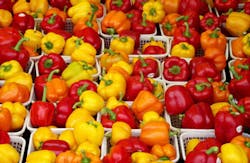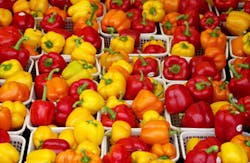The new method for improving the shelf life of food products is based on living mycelium's oxygen consuming properties and the production of carbon dioxide. According to the patent, which was issued to Oliver Poyntz, it is particularly suitable for prolonging the freshness of fruit and vegetables. A living mycelium tablet, encased in a perforated polymer film, is placed inside existing food packaging. By inserting the tablet, the level of oxygen inside the packaging is reduced through respiration.
At the same time, the innovation causes the level of carbon dioxide to increase, which contributes to delayed food product spoilage by lowering the rate of respiration of microorganisms that cause the products to spoil, the website explained. Details outlined in the patent also state that an eight percent decline in oxygen level and/or a 10 percent rise in carbon dioxide levels helps fruit and vegetables to ripen at a slower rate, because of the delaying effect that has on ethylene gas.
The patent emphasised the prolonged effect of the mycelium tablet, claiming that the package can be opened and then resealed without the positive effect on its freshness being lost. Even after the product is repackaged, if the tablet is inserted it will continue to control the levels of oxygen and carbon dioxide within the package.
RELATED: WP Rawl to open vegetable processing facility in Florida
According to Food Production Daily, the tablet is produced by mycelium — the vegetative part of a fungus, which consists of a mass of branching hyphae similar to threads. Sterile mycelium substrate can be processed and pressed into a tablet shape to be handled more conveniently. When the tablet has been pressed into shape it can be then inoculated with a range of edible filamentous fungi, which can sustain temperatures of about 2 degrees Celsius and continue respiring in conditions typically present in refrigerated food supply chains. Japanese Enokitake mushrooms are a suitable example of this, the patent noted.
Next, the tablet is sealed in perforated film, used to restrict the amount of moisture lost from the mycelium but also to prevent particles from the mycelium contaminating the food product inside the package.
The patent also pointed out that the effect of the tablets keeps packaged fruit and vegetables fresh at least two days longer than other types of packaging. A number of packaging companies have been using modified atmosphere packaging that controls the amount of gases inside but according to the patent this method has two key disadvantages: the equipment required is too expensive and the modified atmosphere cannot be retained once the packaging has been opened.

